Internal parasites.ppt
Parasitism is where theparasite benefits at theexpense of the host byeither living within the host(Endoparasites) or on thehost (Ectoparasite)
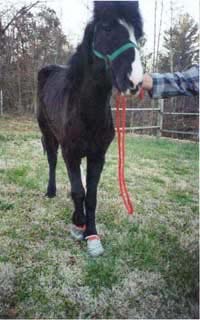
Effect of Endoparasites
Endoparasites continue to be a
significant threat to the health of the
Parasite infection causes loss of
nutrients or blood from the host and
serious economical and medical
problems in managing horses
Depletion of nutrients and blood can
cause severe loss in condition,
decrease growth and reduce
reproductive and athletic
Prevalence of Endoparasites
More than 150 types of internal parasites are known
The five most significant ones are strongyles,
ascarids, pinworms, tapeworms and bots
It is important to understand the life cycle of these
parasites as successful prevention and control
programs are effective because they interrupt the
life cycle of parasites
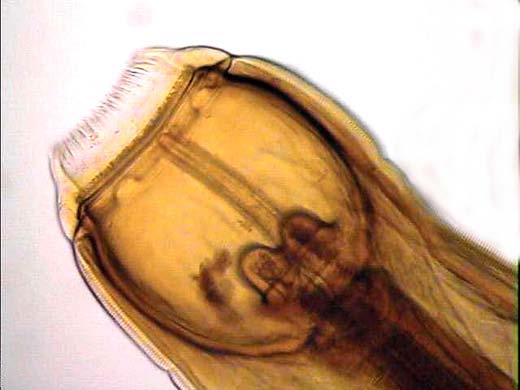
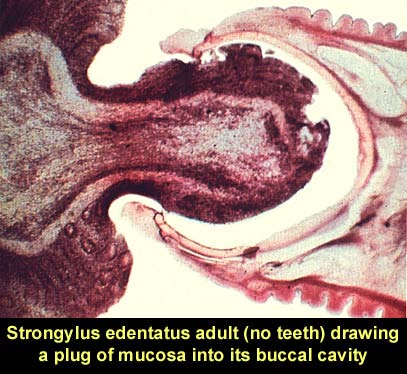
Nematode Structure
A protective outer skin
Resistant to host digestive
The basic nematode body consists ofan outer tube enclosing an inner tube
No vascular system
Circulation of nutrients is assisted bybody movements and locomotion
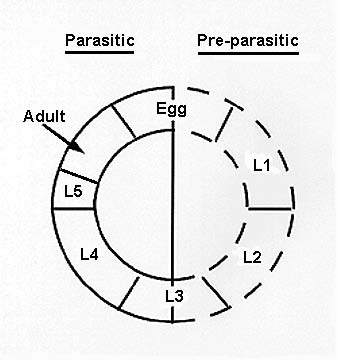
General Life Cycle
Strongylus vulgaris
Infection is by eating of the immature worms (L3) with grass fol owed by
migration to the smal intestine (A) and penetration of the intestinal wal (B)
7 days approx
Penetration of arteries (C) and migration to the large intestine arteries (D)
14 days approx
Stay here for 3 months and form nodules in the wal of the intestine (D)
Rupture of these nodules releases the young adult parasites L5 into the
lumen of the intestine (6 to 8 weeks to mature)
Mature adults mate and produce eggs that are passed with faeces
Pale mucous membranes
Poor weight gains
Weight loss combined with dul , staring coats
Clinical signs are related to the feeding habits of
Small Round Worms
Horses are infected by eating immature
worms L3's while grazing
Pass through intestines to large intestine
Here, the larvae L4 burrow into the
intestine wal s and muscle and become
Can stay here for a number of years
When conditions are right outside they
Affects foals, adolescents develop immunity
Eggs are swallowed with feed, pasture or water
Eggs hatch, and the larvae burrow into the wall
of the small intestine where they migrate into
Next they travel to the liver, heart and
subsequently to the lungs normally within 7-
L3's are coughed up and swallowed
L4 - Adults mature in the small intestine
Eggs passed in 10 week old foals
Can remain infective for years
Unthriftiness,
Rough hair coat
Cough and nasal
discharge that does notrespond to antibiotictreatment
Damage by Ascarids
Damage to the foal or young horse begins during this migration
Physical damage, inflammation and scarring of liver and lung
tissue, are results of the migration
Damage from adult worms can range from slight digestive
irritations and decreased feed absorption to intestinal blockage
and subsequent colic
In heavy infections ascarids may be responsible for gut
impactions and ruptures
Adult pinworms lay their eggs around the
anus of their host
Eggs drop off and contaminate pastures,
water, bedding and feeding areas
The infective stage of Oxyuris equi is an egg
containing a third stage larva (Egg + L3)
Infected by ingestion
Larvae (L3s) hatch in the smal intestine,
pass into the large intestine
Here they molt to the fourth stage (L4) about
8 to 10 days after infection
A lengthy maturation phase of about 100
Severe anal itching
which causes the horse
to rub its tail and the
The hind quarters of
affected animals should
be washed to remove
egg masses before
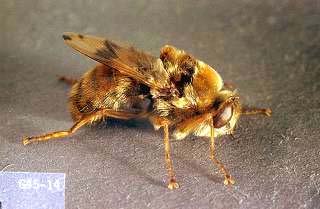
Stomach bots are the larvae of a
The females lay eggs on the hairs of horses legs
Licking stimulates hatching
Attach to the tongue and burrow into the tissues of the
Three weeks, a second stage larvae emerges, is
swallowed and attaches to the lining of the stomach
Over wintering in the stomach, theypass out in the manure in spring anddevelop into adult flies
The adult flies are active from latespring to the kil ing frost in late fal
Treatment for bots should be scheduledfrom mid to late-summer and again aftera kil ing frost
This schedule renders winter treatmentsunnecessary
Young foals 4–47 days old
Capable of both parasitic and
free-living reproductive cycles
After hatching, larvae may
develop through four larval
stages into free living adult
male and female worms
Foals infected by ingesting
larvae in the dam's milk or by
penetration of the foal's skin by
infective larvae in the bedding
The larvae migrate through the
lungs and the smal intestine
causing injury while passing
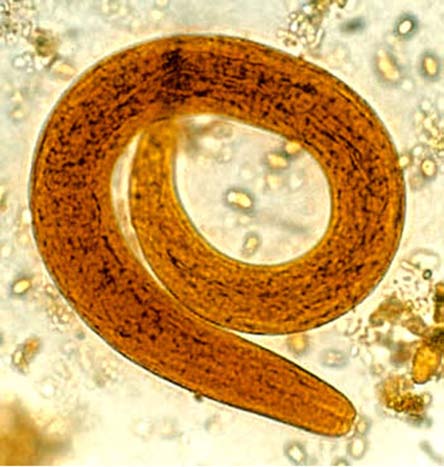
The life cycle can be completed in less than
Foals quickly develop immunity to these
The main problem caused by these parasites
is diarrhoea, which may not respond to
Some foals with threadworms may become
dehydrated and develop other problems
related to chronic diarrhoea
Threadworms infections may accompany,
but are not the cause for "foal heat"
Tapeworms occur in horses of al ages
Transmission requires an intermediate
host, the oribatid mite which exists on
Horse ingests the mite from pastures,
and it takes about two to four months
for the tapeworm to mature in the horse
Mature worms first occur in weanlings
Large numbers of tapeworms can cause
ulceration in the large intestine and
caecum, colic, and a severe form of
intestinal blockage
Many different commercial products are available to
remove internal parasites from horses
These drugs are administered in several different
ways: Purge (kil ing of adults)
Via stomach tube (drenching)
Pel ets every 8 weeks in feed
Continuous drug control program
Intramuscular injection (moxidectin)
Seasonal Influence
De-worming programs work best if used when climatic conditions are
favorable for hatching of eggs, development of larvae and
transmission of infection
The annual cycle to control parasites should begin in early autumn
(September) and continue through February or March
Research indicates that it is better to concentrate treatments in
autumn and winter than to use the same number of treatments
spaced evenly throughout the year
Although this program is somewhat different from the traditional de-
worming schedules, there is increasing documentation for its
Praziquantal & Ivermectin
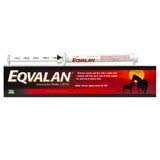
One of the most
effective classes of dewormers
Kills everything except encysted small strongyle larvae &
Since ivermectin became available, the incidence of large-
strongyle-related colic has decreased dramatically
The use of ivermectin every five to six months should
eradicate large strongyles on a farm in about two years
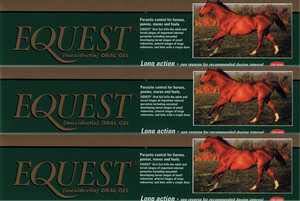
Kil s 15% encysted smal
strongyles and bots andprovides 84-day suppression of strongyle eggs
One of the least safe commercial worm medicines
currently in popular use
There are reports of it kil ing horses who were in
marginal condition, undernourished and/or a little
Telmin (Mebendazole) & Panacur (Fenbendazole)
Given at double dose according to the horse's weight for
five days in a row, or at eight times the dose wil kil more
encysted smal strongyle larvae than moxidectin
They are extremely safe when used alone x100
Wil not control bots and may require higher dosages to
Most resistance to wormer is found in this class
Strongid, Pyratape
They are effective against
ascarids, strongyles andpinworms
A double dose of the
pyrimidines has been effectivein control ing tapeworm
Praziquantel & Ivermectin
Effective against tapeworms
No efficacy against roundworms
Praziquantel & Ivermectin
High efficacy against tapeworms and adult smal roundworms
Roundworm Roundworm Ascarids
Parasite Prevention
Management programs which interrupt the life cycle of the parasite
before infestation occurs are the key to successful control
Sanitation in stal areas is essential. Manure should be removed and
placed in a compost pile or spread on cropland or pastures not being
grazed by horses. The larvae in composted manure wil be destroyed if
sufficient heat is built up
Alternative grazing with ruminants and pasture rotation schemes wil
aid in disrupting the parasite life cycle
Vacuuming or col ecting faecal material in pasture is expensive, but it
can be very effective
Parasite Prevention
Be sure to isolate and deworm al new arrivals to the
Feeding horses on the ground and not out of
containers increases the risk of becoming infested
Check the efficacy of that program by evaluating
faecal samples for parasite ova on an annual basis
Adopt a rotational treatment protocol, which
alternates between classes of anthelmintics
Source: http://www.redmills.fr/assets/files/pdf/internal-parasites.pdf
Project no. SSPE-CT-2004-502457 Project acronym: EU-MED AGPOL Project full name: Impacts of agricultural trade liberalization between the EU and Mediterranean countries Instrument type: Specific Targeted Project Priority name: 8.1 Policy-oriented research Deliverable D06 Characterization of the Israeli Agricultural Sector with Special
Applying for a Visa for Summer Academy Berlin 2014--Updated March 3 Please note that the visa you have to be studying in the U.S. (F-1) must be valid for at least three months beyond the end of your stay in Germany. If it is not, the Consulate will still consider your application with a couple of extra requirements (see red text below). Please make an appointment at the German Consulate in Chicago as soon as possible. We recommend that you choose an appointment to occur during Spring Break (March 17-21) so you can avoid missing classes at ISU. Appointment information Schedule your appointment with the Consulate in Chicago at this website: https://service2.diplo.de/rktermin/extern/choose_realmList.do?locationCode=chic&request_locale=en • Click "Continue" under Visa • Click "Continue" under Business and Visitor's Visa • Click "Continue" again • Click through the calendar and choose an appointment during Spring Break (March 17-21). You will need to enter your last name, first name, e-mail address, country of citizenship, date of birth, phone number, passport number, and a security code to make your appointment. You must schedule your appointment with the Consulate in Chicago. You can't apply at another Consulate because Chicago is the only Consulate that serves Iowa. Information online: http://www.germany.info/Vertretung/usa/en/05 Legal/02 Directory Services/01 Visa/ Business Visa.html Required Document Checklist: _ fully completed application form completed through VIDEX and then printed http://www.germany.info/Vertretung/usa/en/05 Legal/02 Directory Services/01 Visa/ Visa Form Instructions.html _ fully completed declaration http://www.germany.info/contentblob/1965674/Daten/198760/Visa_Declaration.pdf _ _ two passport photographs (strict requirements, see details) http://www.germany.info/contentblob/1965686/Daten/178573/Visa_Foto_Mustertafel_L.pdf _ valid national passport that








